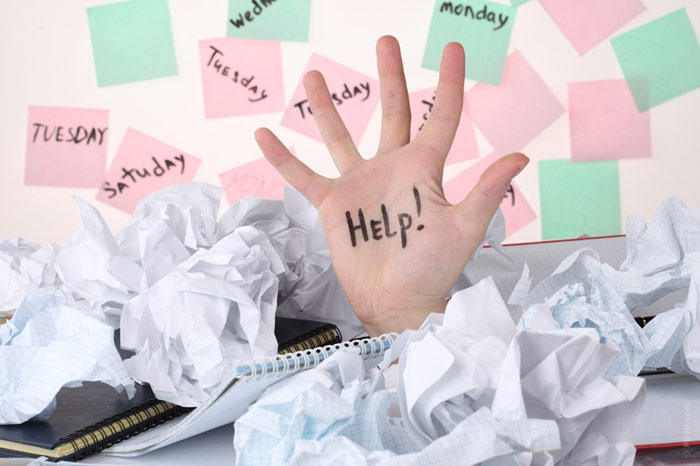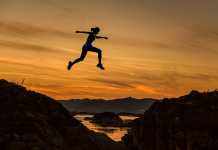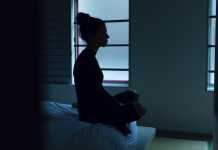You feel dissatisfied when incorrect pieces of advice are given in unimportant matters. But what if the wrong advice is given in a case of emergency? This is life-threatening. Lifeguard Doug Copp argues that the traditional recommendations for behavior during earthquakes are harmful to life. Lifehacker tried to find out whether it is truly so.

Rescue Chief and Disaster Manager of the American Rescue Team International (ARTI) participated in rescue operations in 60 countries and investigated 875 cases of complete destruction of buildings because of an earthquake. For two years, he served as a UN expert on the effects of disasters.
Doug Copp obtained his first rescue experience in Mexico during the earthquake of 1985, when he got into the destroyed building of the local school. According to him, all the children died because they followed the Duck and Cover (“Drop, cover, and hold”) instructions and were killed by the desks under which they were hiding.
Doug Copp argues that if they had stayed next to the desks rather than under them, they would have had more chances to survive because they would have been in a space that Copp calls the “triangle of life.”
What is the “triangle of life”?
The essence of this theory is that the crumbling structure easily breaks through and crushes horizontal surfaces, but it will not easily destroy upright pillars, posts, furniture walls and other vertical objects. Therefore cavities and spaces are often formed around vertical objects, and this is what Doug Copp calls the “triangle of life.”
When you select an object for protection, you should pay attention to its size and toughness. The higher these parameters are, the more reliable the “triangle of life” will be.
10 recommendations from Doug Copp on how to behave during an earthquake
- In case of an earthquake, one should not hide in transport or in a building.
- Take a fetal position in the “triangle of life.”
- Wooden buildings are the safest constructions during an earthquake. They are followed by brick buildings. The most dangerous are buildings made of concrete.
- If you woke up from earth shocks, quickly slide down onto the floor and stay near the bed.
- If you cannot leave the building (see the first rule), act in accordance with points 2 and 4.
- Do not stand in the doorway.
- Never stand on the steps.
- If possible, stay closer to exterior walls. This will give you more chance to get out.
- Once you have left the vehicle (point 1), lay down next to it if there is danger of collapse of the adjacent buildings.
- Large piles of paper in offices form a “triangle of life.”
To support his theory, Doug Copp and his rescue team ARTI together with the Turkish Government and the University of Istanbul made a film in 1996 that confirmed the correctness of the “triangle of life” theory. To shoot the film, they placed 20 mannequins in the building: 10 of them were located according to the Duck and Cover instruction, and the remaining 10 mannequins were placed according to the “triangle of life” theory. After the earthquake simulation, the rescuers entered the destroyed building, documented everything and made the above-mentioned film. The main conclusion was the confirmation of Doug Copp’s theory which pointed to the inefficiency of the Duck and Cover instructions.
Criticism of the “triangle of life”
In response to the released film and the rapid spread of the triangle of life theory, there have been many claims about the lack of scientific knowledge and the danger posed by the theory. Critics do not just doubt the theory itself – Copp’s personality also suffers from them considerably. For example, The Albuquerque Journal reporter has conducted his own investigation, which resulted in the opinion about the poor reliability of Copp’s actual experience in rescue operations and his proneness to exaggeration and self-praise.
According to the US Geological Survey, the weakness of the theory consists in the fact that larger items can be moved both vertically and horizontally during an earthquake, so it is very difficult to predict the location of such “triangles of life,” and there is a danger of being smashed by moving massive objects even before the building collapses.
In addition, statistics shows that the majority of injuries and deaths are not the consequence of the collapse of buildings; instead, they are caused by the falling of heavy or sharp objects. Therefore, when you spend the time needed for the analysis, search and moving to the “triangle of life,” you run the risk of losing precious moments in order to just find shelter near the furniture or an exterior wall.
Marla Petal, the critic of Copp’s theory, draws attention to the fact that the experiment was a simulation rather than the real situation: there was no horizontal movement of objects, the building was destroyed by special equipment that ruined the load-bearing walls, which had the effect of smashing. Besides, the mannequins were placed in the “triangle of life” in advance, but in reality people need to get to it.
In general, Copp’s critics and the supporters of the traditional theory had a very negative attitude to any movements during an earthquake, since they greatly increase the risk of injury caused by shattered, falling, flying objects, debris, or broken floors. It is also not advisable to roll out of bed – for the same reason – or to take refuge next to the exterior wall.
Some critics’ remarks
However, with all the points voiced “against” the theory, the critics add that the strategy of behavior may be different due to the quality standards of architectural structures in different countries. The critics admit that the “triangle of life” might be more useful in case of complete destruction of buildings that most often occurs during the shocks; or in developing countries where the quality of buildings is far from the standards of seismic resistance.
The Red Cross does not dare to state categorically that the pattern of behavior during earthquakes proposed by Copp is wrong or inappropriate, but it claims that the traditional Duck and Cover strategy is not incorrect, at least in the United States.
Seismic resistance of the building can be found out before the earthquake, but how do we predict its strength? One should also consider that teaching the theory of the triangle of life is more difficult than the traditional theory. People face with the devastating earthquake results and are injured or killed by falling objects 12 thousand times more often. Critics insist on the Duck and Cover tactics as the more preferable model of behavior during earthquakes.
The choice is ours
As a result, we are to choose the variant of behavior during an earthquake. Of course, you do not need to wait for an emergency to start thinking about how to react to it. The first thing we can do is to read the instructions for survival. As for the earthquake, there are general guidelines, which are suitable for both points of view.
Before the earthquake
- Learn everything possible about the strength and seismic resistance of your building.
- Fasten, strengthen and set everything that can fall off or tear off, screw big furniture items to the wall.
- Set everything that can fall or get broken away from sofas and beds, no matter how well it may be fixed.
- Keep nothing in the doorways.
- Keep flammable and poisonous liquids in a reliable tank, resistant to damage.
- Find a safe place that corresponds to the chosen theory.
- Prepare an emergency kit in case of emergencies.
- Develop a clear and easy to implement action plan.
During the earthquake
- Do not panic. To succeed in doing so, act according to the predetermined plan.
- Be prepared to improvise.
- Stay away from windows.
- Remember that it is best to stay in the building, having hidden in a safe place.
- If your wish to leave the building is strong, this can be reasonable if you can do it during 15-20 seconds and are on the third floor or lower.
- Do not jump out the window if you are not on the ground floor.
- In the dark, do not turn on the light (damaged wiring can cause a short circuit and fire), do not light a match, if the building has a gas pipeline nearby, use the flashlight.
- If you are outdoors, move away from buildings and power lines.
- In the mountains, beware of landslides.
- Do not try to keep balance, clinging to the trees: during the shocks they can act as a steel spring.
After the earthquake
- Look around and assess the situation.
- Examine yourself and others for injuries and wounds; do not think that you will feel if anything is wrong with your body. The experienced shock may not let you feel pain.
- Provide first aid to those in need.
- Turn off the electricity.
- Put out the fire.
- Searching for some items in cabinets, remember that the contents could have moved, so open the doors carefully.
- Remember about splinters and other dangerous objects on the floor. Wear sturdy shoes and the clothing that covers the body as much as possible, wear thick gloves.
- Check the strength of ladders and other structures.
Be prepared for aftershocks
These are general guidelines and principles of behavior during earthquakes. If you have any interest in the topic or you live in an area with high seismic risk, it is best to examine this issue in greater detail. Well, at least, we can wish you to never use this knowledge in practice.










